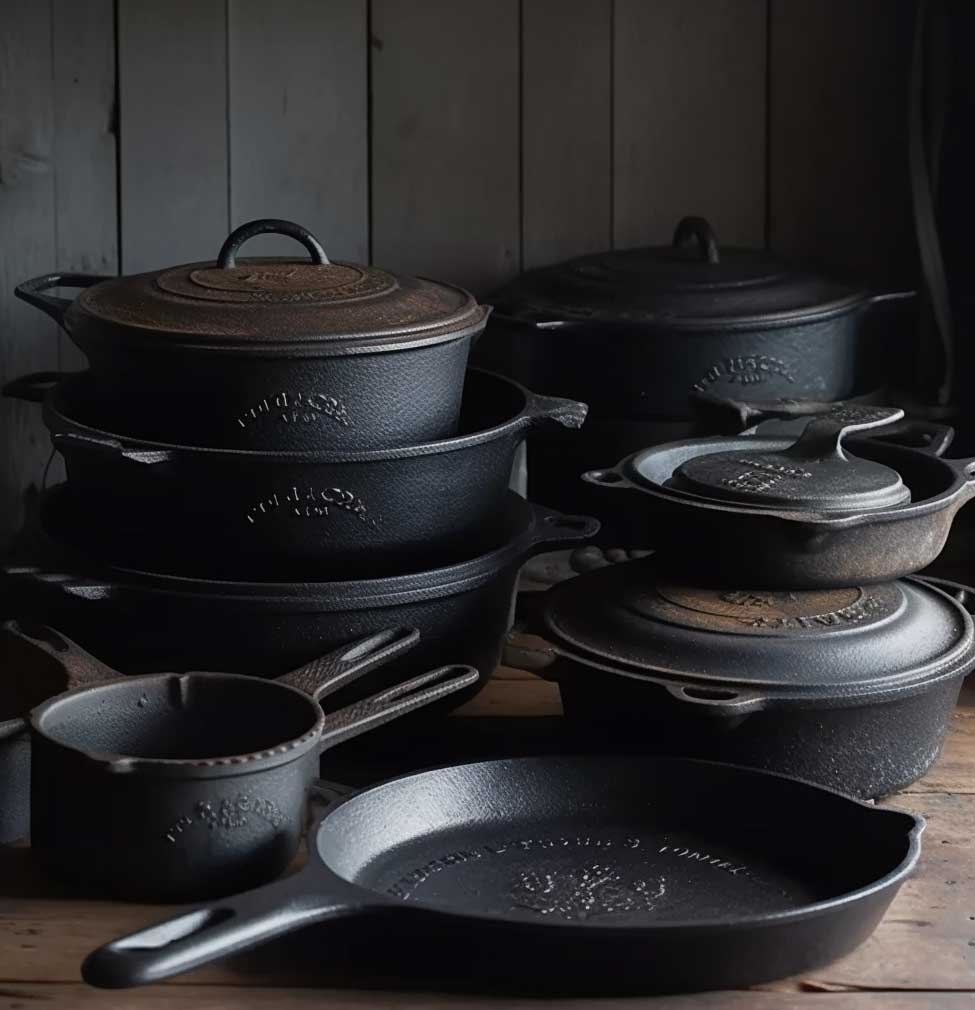Cast Iron Buyers Guide


Cast iron cookware has been around for centuries and is still one of the most popular types of cookware today. Cast iron pots and pans are durable, versatile, and can last a lifetime with proper care. However, there are many factors to consider before making a purchase. In this guide, we’ll cover everything you need to know about buying cast iron pots and pans.
- Types of Cast Iron Cookware: There are two main types of cast iron cookware: bare and enameled.
Bare Cast Iron: Bare cast iron is uncoated and has a natural non-stick surface that develops over time with proper seasoning. It’s great for searing and frying because it can withstand high temperatures. Bare cast iron requires regular seasoning and can be prone to rusting if not properly cared for.
Enameled Cast Iron: Enameled cast iron has a coating of enamel over the cast iron. This type of cookware is non-reactive and doesn’t require seasoning. It’s great for braising, stewing, and making soups. Enameled cast iron comes in a variety of colors and is less prone to rusting than bare cast iron.
- Size and Shape: Cast iron cookware comes in a variety of sizes and shapes. When selecting a pot or pan, consider the type of cooking you plan to do and the number of people you’ll be cooking for. A larger pot or pan is better for cooking for a crowd, while a smaller one is more suitable for cooking for one or two people. The shape of the pot or pan can also affect its functionality. For example, a Dutch oven is great for slow-cooking, while a skillet is ideal for searing and frying.
- Weight: Cast iron cookware is heavy, and the weight can vary depending on the size and shape of the pot or pan. Consider your strength and ability to lift and maneuver the cookware when selecting a pot or pan. If you plan to use the cookware frequently, it’s worth investing in a lighter weight option.
- Handle and Lid: The handle and lid of a cast iron pot or pan are essential features to consider. The handle should be sturdy and comfortable to grip, and the lid should fit tightly to lock in moisture and heat. A lid with a knob or handle is easier to lift, while a lid without a handle can be more challenging to maneuver.
- Brand and Price: Cast iron cookware can vary in price, and some brands are more expensive than others. More expensive brands may use higher quality materials and have better craftsmanship. However, some less expensive brands still offer excellent quality at a lower price point. Research different brands and read reviews before making a purchase.
Cast iron cookware is an excellent investment for any kitchen. When selecting a pot or pan, consider the type of cooking you plan to do, the size and shape of the cookware, the weight, the handle and lid, and the brand and price. With proper care, a cast iron pot or pan can last a lifetime and be passed down through generations.



